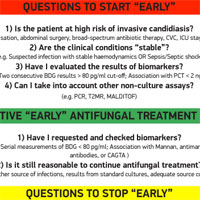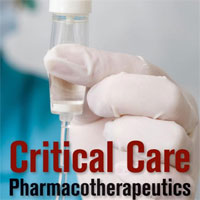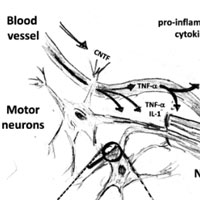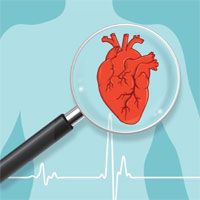
Antifungal Treatment in the ICU
Invasive fungal infections (IFIs) are a major cause of morbidity and mortality in critically ill patients. Almost 80% of IFIs are due to Candida spp., which are the third most common isolated microorganisms in the intensive... read more

Probiotic and Synbiotic Therapy in Critical Illness
Critical illness is characterized by a loss of commensal flora and an overgrowth of potentially pathogenic bacteria, leading to a high susceptibility to nosocomial infections. Probiotics are living non-pathogenic microorganisms,... read more

Critical Care Pharmacotherapeutics
Critical Care Pharmacotherapeutics presents information on the fundamentals of critical care practice from a pharmacist's point of view. This accessible text is an excellent introduction to critical care pharmacy. Pharmacy... read more

Enough is Enough (O2 Saturation of 94-96%)
The liberal use of supplemental oxygen therapy in acutely ill adults has a long history in the hospital, but high-quality therapy supporting its practice is unclear. Recently, the role of oxygen therapy in non-hypoxic patients... read more

Electrophysiological Investigations of Peripheral Nerves and Muscles
Resting trans-membrane potential difference (Em) of skeletal muscle is correlated to the energy status of the organism: the more severe the illness, the lower the Em. In 1971, Cunningham demonstrated this association with... read more

Penn Medicine Shortens ICU Stays with Real-time Data
Leveraging real-time data streams from its EHR platform, Penn Medicine has created a dashboard and alerting system to speed the process of getting ICU patients breathing on their own. Many patients in hospital intensive care... read more

Hoopla Aside, hs-cTnI is Not Catching Missed Mis
We have been searching for a tool to identify myocardial infarction patients who are truly safe for discharge ever since Pope, et al., found that we were discharging two percent of patients with MIs from the emergency department.... read more

Aid Tool Does Not Help Care Decisions in Prolonged Mechanical Ventilation
Treatment decisions commonly have to be made in intensive care units (ICUs). These decisions are difficult for surrogate decision makers and often lead to decisional conflict, psychological distress, and treatments misaligned... read more

Secrets of an Intensive Care Doctor
There are few jobs that place you on the frontiers of human existence: midwives see lives into the world, undertakers oversee their departure. In between these beginnings and endings, surgeons, doctors and nurses interact... read more

Medical Dispatchers’ Perception of Visual Information in Real Out-of-hospital Cardiac Arrest
Providing medical dispatchers with visual information from the location of OHCA might improve their understanding of the OHCA-scenario, which might enhance communication, their ability to guide more bystanders and improve... read more

Widespread use of Chlorhexidine Doesn’t Promote Resistance in S. Aureus
Investigators from the University of Nebraska Medical Center (UNMC) Division of Infectious Diseases recently published reassuring data indicating that use of chlorhexidine (CHG) to bathe hospitalized patients does not lead... read more

The Effect of Defining COPD by the Lower Limit of Normal of FEV1/FVC Ratio in TIOSPIR Participants
Using the lower limit of normal to define airflow obstruction would have excluded patients in TIOtropium Safety and Performance In Respimat study with a higher risk of nonfatal major adverse cardiovascular events and a lower... read more

Patient-important outcomes in randomized controlled trials in critically ill patients
Patient-important outcomes are rarely primary outcomes in RCTs in critically ill patients published in 2013. Among them, mortality accounted for the majority. We promote the use of patient-important outcomes in critical care... read more

Unintended Consequences: Fluid Resuscitation Worsens Shock in an Ovine Model of Endotoxemia
Fluid resuscitation resulted in a paradoxical increase in vasopressor requirement. Additionally, it did not result in improvements in any of the measured microcirculatory- or organ-specific markers measured. The increase... read more








